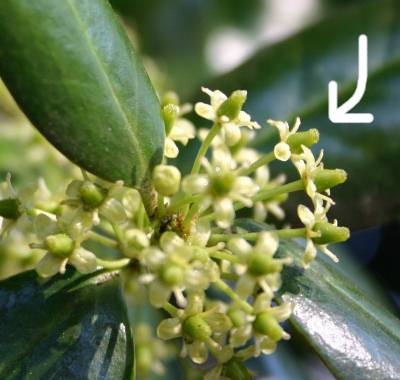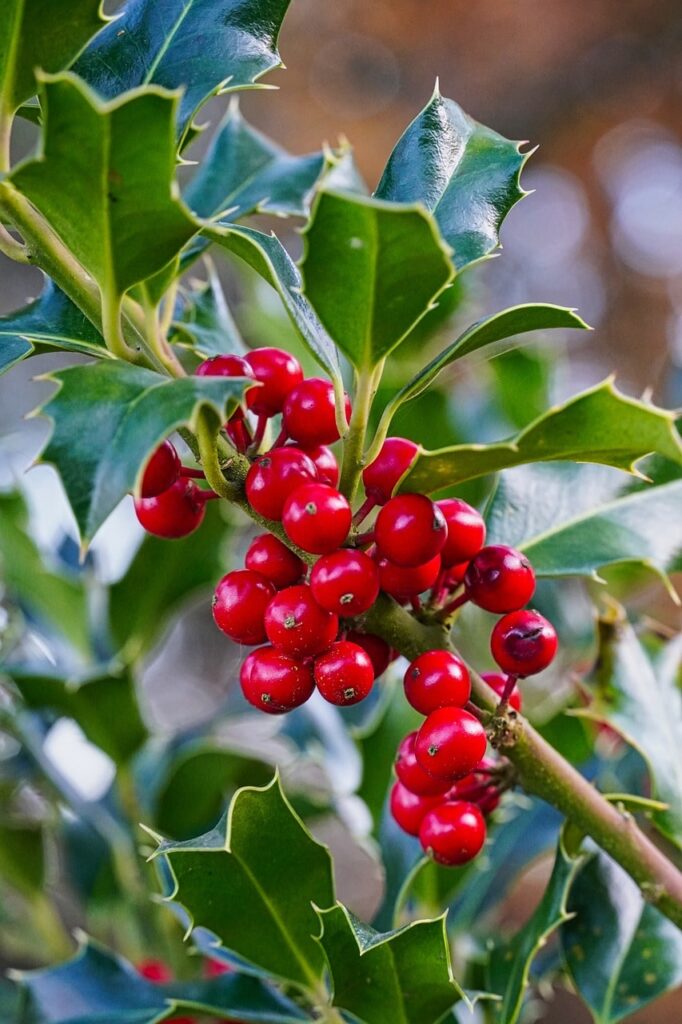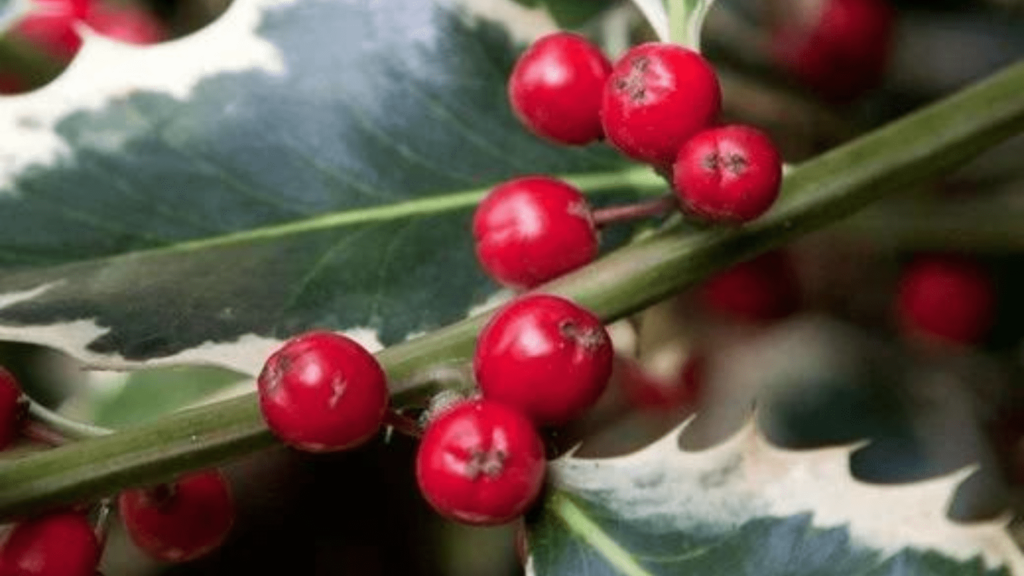Nothing says winter in the garden like holly berries. These bright red berries, nestled within glossy evergreen shrubs, stand out like ornaments against the stark landscape. However, simply planting a holly bush doesn’t guarantee you’ll enjoy these vibrant berries.
Here’s what you need to know about holly berries.
Understanding Holly Plants: Male, Female, and Self-Fruiting
Most holly plants are dioecious, meaning male and female flowers grow on separate plants. To produce berries, you need both male and female hollies in your landscape.

Male holly have four stamens that support the anthers, or pollen sacks. These contain sticky, yellow pollen. Female holly flowers have a rounded pistil in the center, which receives pollen and resembles a green berry. When pollination does not occur, female flowers drop without producing berries.

Some hollies are parthenocarpic, meaning they can produce berries without fertilization. For example, ‘Burfordii’ (Ilex cornuta) is parthenocarpic, while ‘Nellie Stevens’ (Ilex x) is partially parthenocarpic, producing some berries but yielding more with a nearby pollinator.
Royal Family and China Dynasty (Ilex x meserveae) hollies are often referenced as self-pollinating, but they aren’t. To ensure berry production, growers plant both male and female hollies in the same container. Royal Family includes combinations like Blue Prince and Blue Princess or Blue Prince and Blue Maid, while China Dynasty combines China Boy and China Girl.

Why Your Holly May Not Be Producing Berries and How to Ensure They Do
There are several reasons why your holly might not produce berries:
- All-female or all-male planting: If you have only male or female plants, no berries will form. Check your plant’s flowers: male flowers have stamens, while female flowers have a round pistil.
- Wrong male plant: Not just any male holly will work. Choose a male plant of the same species that blooms simultaneously with your female holly. Our Holly Pollinator chart can help you match the right plants.
- Young plants: Most hollies purchased from garden centers will bloom and berry. Hollies grown from seed or cuttings may take up to five years to bloom and berry.
- Lack of pollinators: Hollies rely on flying insects like bees, flies, and wasps for pollination. If these are scarce, berry production may be limited.
- Over-fertilization: Too much nitrogen promotes leaf growth at the expense of flowers and berries.
- Improper pruning: Pruning too much can reduce flowers and berries. Evergreen hollies bloom on buds set the previous fall, prune these in early summer. Deciduous hollies bloom on new wood and should be pruned in late winter, trimming only a third of the shrub at a time.
- Weather: Drought, high temperatures, and late cold snaps can all impact flowering and berry production.
- Spacing: Ensure the correct spacing between male and female plants for effective pollination:
- Evergreen Holly Trees: One male per three females, with spacing up to 500 feet apart (300–400 feet recommended).
- Evergreen Holly Shrubs: One male per 20 females, with spacing within 300 feet.
- Deciduous Holly Shrubs: One male per 5–10 females, with spacing within 50 feet.

Tips for Healthy Holly Plants
Hollies are popular and versatile shrubs for screening, native beds, and foundation plantings. Follow these tips to keep your hollies healthy and productive:
- Rich soil: Hollies thrive in slightly acidic, compost-rich soil.
- Moderate water: Provide steady moisture with excellent drainage.
- Acid-loving fertilizer: Use a slow-release fertilizer formulated for acid-loving plants in the spring, avoiding excess nitrogen.
- Limited pruning: If berry production is your goal, limit pruning and allow hollies to grow naturally. However, keep in mind that some holly varieties can grow large, so you may need to prune regularly if they’re near your home.

Holly berries are a stunning winter garden feature, but they require careful planning and maintenance. Most holly plants are dioecious—meaning they need both male and female plants for berry production. Success hinges on several factors: proper plant selection, correct male-to-female ratios, appropriate spacing, and optimal growing conditions. By following the strategies outlined in this article, you can cultivate beautiful, berry-laden holly plants in your garden.
Want more gardening tips like these? Sign up for our newsletter! We share seasonal advice, plant care guides, and insider tricks to help your garden thrive. Don’t miss out on valuable gardening knowledge – join our growing community of garden enthusiasts today!



